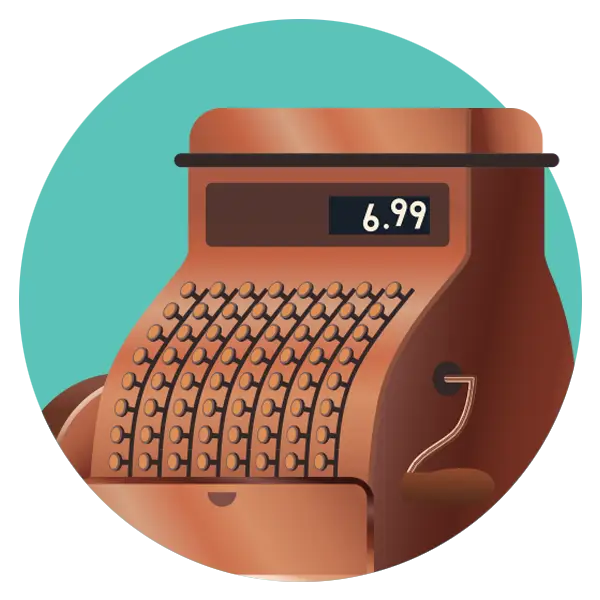THE EVOLUTION OF THE STORE – 1800-1899
1800 – 1899
The Age of Independence
The 19th century represents the first revolution in the history of retail stores and the customer experience. With the advent of the department store, the retail consumer acquired a sense of independence that had long been desired, becoming the master of their own purchase journey and giving them the freedom to wander and explore these new large commercial spaces which would see the customer experience radically transformed forever.
Step back in time with our 19th Century Department Store Playlist!
The Department Store: A Symbol of Retail’s New Vision
In direct response to the rise of the middle-classes, particularly newly affluent middle class women, department stores quickly emerged across Europe and the United States throughout the 19th century. Shopping centers had already made their debut at the end of the 18th century throughout Europe. The Galeries de Bois, Paris for example took its inspiration from the souks of Arabia, quickly becoming the inspiration for the covered shopping passages and arcades that would spring up throughout the continent, and paving the way for the emergence of a new format of shop: the department store.
Considered today to be the earliest model of the department store, Harding, Howell & Co. inaugurated their namesake department store in London in 1796. Divided into different areas, the store focussed on the needs and desires of fashionable women. Other early stores that would later establish a department store model included Fortnum and Mason and Debenhams.
For America, the business and economic sectors were changing dramatically, with manufacturing and industry rapidly overtaking agriculture as the dominant business. Industrial factories brought with them new jobs and new standards of living, and with more successful Americans came broader and more upscale taste. Department stores such as Macy’s, Bloomingdales, and Sears began popping up in major cities like New York City and Chicago, and would soon become fixtures of, and highly influential in, the American life.
Very much in keeping with the role of the customer experience today, these department stores didn’t just sell items. They provided demonstrations, talks, and entertainment events that appealed to newly wealthy customers looking for how best to use their disposable income and time. These grand establishments became landmarks within rapidly growing cities, giving areas a sense of identity and pride, and inviting the consumer to explore their wondrous displays, signaling a shift away from the dark, low-ceilinged emporiums of before.
Nurtured and shaped by the Industrial Revolution, the department store would soon radically transform the customer experience by granting the consumer a level of independence never before seen in retail.
Masters of Their Own Purchase Journey, a Revolution for the Customer Experience
Not only did department stores bring about a whole new format for retail, but they also helped turn shopping into a leisure activity where the consumer now had control of their own purchase journey and overall shopping experience.
Retail consumers could now touch the goods on sale and enjoy standardised pricing. Calling upon shopkeepers to retrieve goods from shelves behind counters or from backrooms after negotiating back and forth on price were no longer necessary.
Women in particular suddenly found themselves free to browse and shop safely away from the home, and from the company of men. With an increasing desire for ‘self-creation’ through consumption, women were beginning to forge their own path in male dominated cities with products created for and targeted exclusively at them. Many of the early department stores were founded by drapers who understood the tastes, desires, and buying power of this new generation of middle class women.

In addition, this new style of shopper was now being informed of new products through promotions. Around this time, the first marketing strategies through trial and error began to develop such as distance selling catalogues and the art of discounting seasonally. Leading the way of early marketing concepts was Aristide Boucicaut and his Parisian “Bon Marché” (1852). Boucicaut is praised with having introduced a number of marketing innovations such as fixed prices with associated discounts instead of the previous system of haggling over prices, a reading room for husbands while their wives shopped, the first mail-order catalogue, and seasonal sales, including the “white sale,” designed to sell sheets and bedding in the winter when sales were slow.

The Cash Register is Born
In terms of technological advances in the 19th century, we see the invention of the first cash register by American James Ritty in 1883. Ritty was a saloon keeper in Ohio and nicknamed the invention the “incorruptible cashier.” The machine used metal taps and simple mechanics to record sales and featured a bell that sounded when a sale was completed.
Ritty’s revolutionary invention went on to spark the ease of customer checkout for over a century, as it was quickly adopted for retail sales. Prior to this, many businesses had trouble keeping track of their accounting and often didn’t know if they were operating at a profit or a loss.
Back to the future
The 19th century can without a doubt be recognised as advancing the evolution of the store and revolutionising the customer experience at the point of sale, paving the way for the way in which we experience stores today. Amongst the many ways in which this happened, this era is best known for being the age of autonomy, granting the consumer a new-found freedom and triggering the first retail marketing strategies and technological innovations which would see retail become a pioneering sector in the use of technology.
